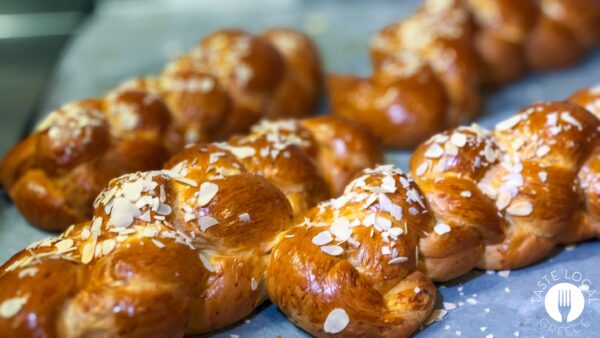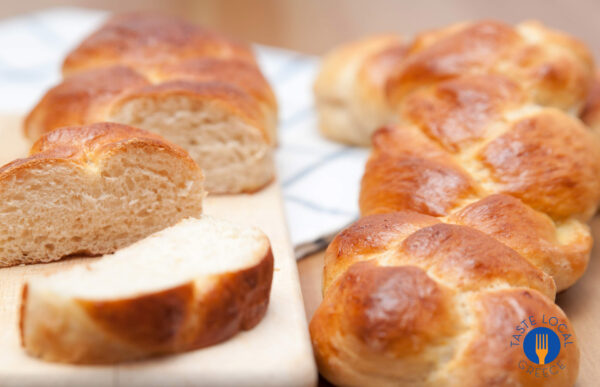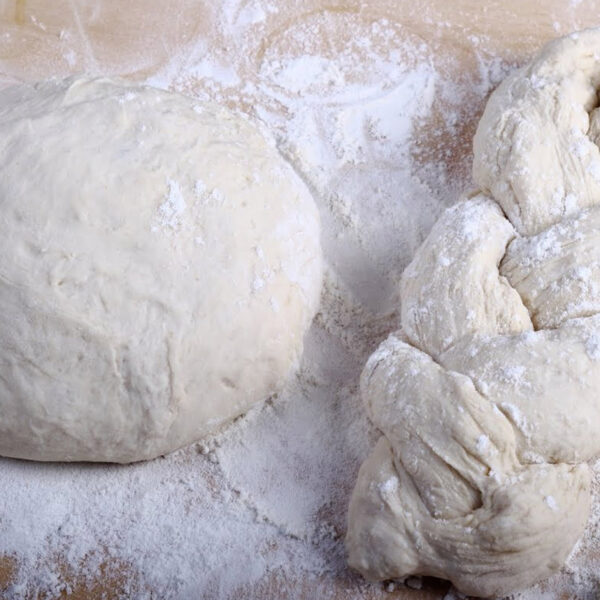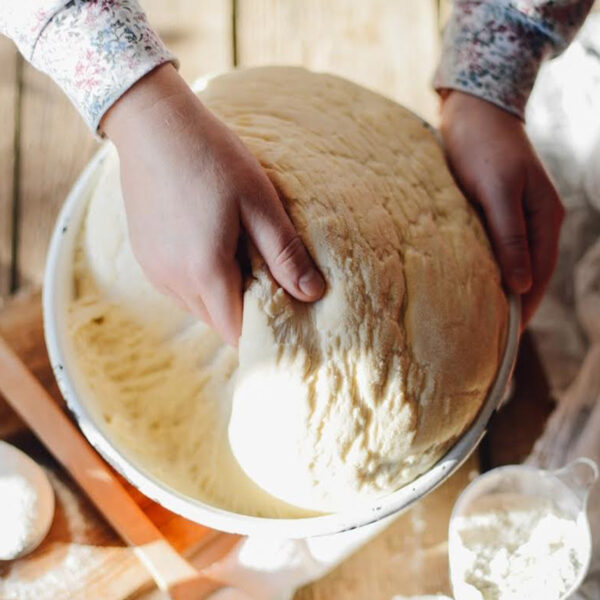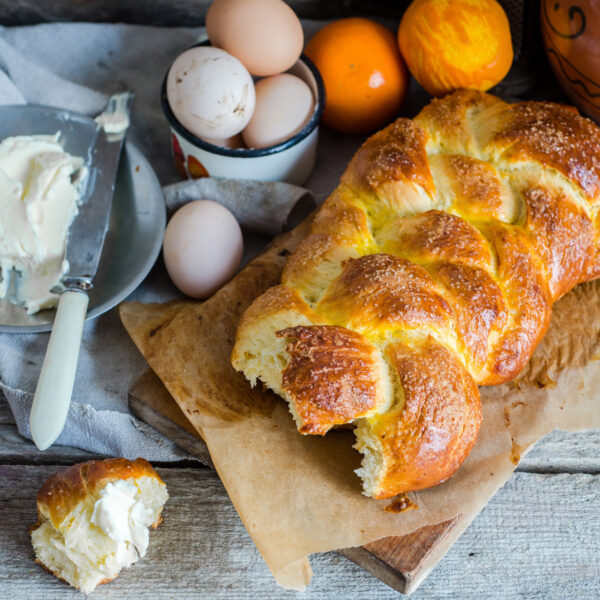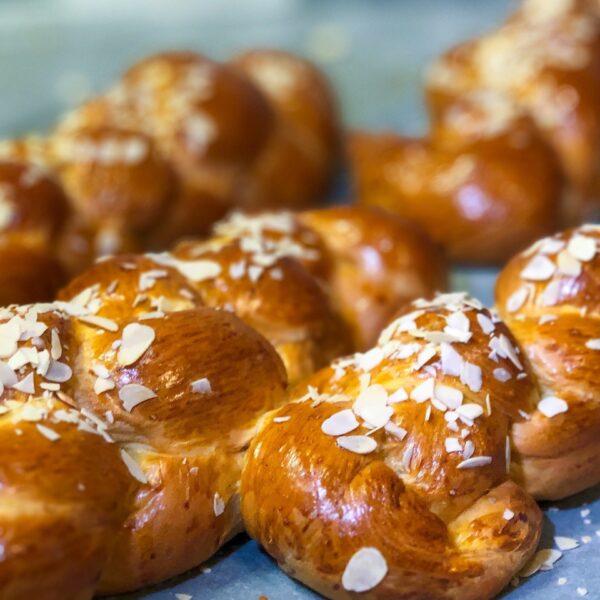Politiko Tsoureki Recipe: A Step-by-Step Guide to Perfection
Text and photos by Giorgio Grigor
Για να διαβάσετε την συνταγή στα Ελληνικά πατήστε εδώ
All these years, every Christmas and Easter, it’s the same old story…
All the blogs and websites praise the best tsoureki: the fluffy one from Mom, the moist one from Grandma Eleni or Aunt Kalliopi, the Politiko (from Constantinople), the Smyrna-style, the chewy, the dense, the one with or without fibres. There’s endless talk about who makes the best tsoureki in Athens, who has the purest ingredients, who uses the proper technique, and where to find the authentic “Politiko” recipe from the City (Constantinople). And so, recipes flood the internet.
But the best tsoureki is the one that takes us back to our childhood, reminding us of the times we would knead with our grandmother or mother and enjoy the fresh tsoureki, tearing it lightly and dipping it in warm milk or savouring it with fresh butter and homemade jam! That flavour never leaves your memory, no matter how much you want to try today’s modern, industrialized, chocolate-covered, rubbery, nut-filled, merenda-stuffed tsoureki. When you taste them, you always think, “It’s nice”, but it doesn’t taste like mom’s. So, I suggest opening your old boxes, finding the recipe from your mother or grandmother, and gathering with your children or grandchildren around the kitchen table to knead and bake the tsoureki of your childhood—of your nostalgic flavours. And if you’re lucky enough to have your grandmother or mother still nearby, even if they can no longer knead with as much energy, you’ll still have that magical warmth from their wise eyes and the blessing of their soft, gentle, wrinkled hands.
Tsoureki from Poli (Constantinople)
Talking for me, the best tsoureki is my mother-in-law, Mrs Efterpi’s—a rich, flavorful loaf with black and white sesame, giving it a unique taste, sometimes finely ground, occasionally fresh, musky and tender because she still kneads it herself. This Politiko tsoureki came as a cultural
gift to those displaced from Constantinople and Asia Minor, changing the course of Greek gastronomy and bringing tastes and traditions from that region. We’re blessed today to carry forward these stories from the past, with memories of grandmothers, their tales, their culinary expertise, and recipes that overflow and fill our lives with taste and beauty. Grandma Efterpi from Therapeia, a longtime cook with expertise in dolmades, stewed meat with eggplants, imam, always with a touch of cinnamon, and of course, the unrivalled hünkar beğendi with its secret techniques, learned from the great Constantinopolitan chef Pantelis Tsobanoglou, founder of the renowned “Pandeli Restaurant”. Alongside her was Grandpa Christos, the tireless helper always rushing to get more supplies. “Go get me some black bread; I’m out of black bread, and while you’re at it, get some good flour for the tsoureki, perfect for the kids…” Grandpa Christos, who would run to the market every time, to specific places for fresh lakerda and pastrami from his favourite fishmonger at the Mishir Carsisi, for baklava straight from his friend Gilioglou, or fresh kaimaki, just prepared. He would take the ancient Lada from Istanbul to Athens to get fresh ingredients for Easter or Christmas, filling the table with delicacies.
You might wonder what tsoureki has to do with baklava, lakerda, and pastrami. And yet, it’s all tied together because, without love, there is no tsoureki! Love is the magical hidden ingredient in Grandma Efterpi’s tsoureki. And no machine can make this tsoureki, which she kneads with her hands, singing to it, caressing it as if it were a baby.
Oh, that tsoureki of hers… what a taste, what an aroma, what presence, and how it rises so beautifully! Every year, my children and I look forward to Christmas and Easter, eagerly awaiting the fresh buns and cookies the grandparents bring. They are proud and happy to
continue this tradition, offering tsoureki, precious lakerda, thinly sliced pastrami, and other treats for an authentic Politiko table.
The tsoureki’s arrival was the reason to break our fast, nibbling on warm slices of milk and morning coffee. When you’d walk into the house, the aromas of those days would greet you: mahlab, mastic, and different kinds of anise mingling with the hummus jar nearby. I want to bring these scents, aromas, and flavours to you. To keep them alive, to revive memories of all those years, for our children to find and our grandchildren to taste—before ready-made, industrialized, flavourless, chocolate-covered imitations take over. Grandma Efterpi’s tsoureki requires effort, hands to knead, love, time to rise, quality flour, fragrant butter, freshly grated flour—so many needs… Still, in the end, it rewards you, filling you with the love you put into it and scenting your home so that Easter feels truly special!
- Ingredients:1 kg brioche flour
300 g melted butter
400 g sugar
Six eggs
Three packets of dry yeast
75 g fresh yeast
1 tsp baking powder
1/2 cup lukewarm milk (about 150 ml)
2 tbsp flour
1 tbsp crushed mastic
3 tsp broken anise
1 cup anise-flavoured water - For Brushing:
Two egg yolks (at room temperature) with a bit of water
Black and white sesame seeds
Instructions:
1. Before starting, read the recipe thoroughly. Weigh the ingredients, warm the milk, melt the butter, and crush the mastic and mahlab in a mortar with a teaspoon of sugar.
2. Prepare the Yeast Mixture: Crumble the fresh yeast in a large bowl. Add two tablespoons of sugar, two tablespoons of flour, and lukewarm milk. Mix well, cover with a clean kitchen towel, and let sit in a warm place.
3. Combine Ingredients: Grandma Efterpi uses an old enamel bowl. She adds sifted flour and melted butter to the yeast mixture, forming a dough like pâte brisée. She then adds the remaining ingredients with slightly warm milk and kneads for about 15 minutes.
4. Anise Water: Boil broken anise seeds in a small pot for 2-3 minutes to release aromas, then add a cup of this water to the dough, kneading until incorporated.
5. Let Rise: Warm the oven to 30°C, and place the covered bowl inside with a cloth and an old plaid blanket. After 4-5 hours, the dough will have risen.
6. Shape the Tsoureki: Divide the dough into quarters, then divide each quarter into strands. Roll out each strand and braid it into tsourekia.
7. Final Rise: Let rise again for 1.5 hours.
8. Bake: Preheat oven to 180°C, brush with egg yolk mixture, sprinkle with sesame seeds, and bake for about 20 minutes, ensuring they don’t burn.
This recipe, rich with stories of Constantinople and full of family tradition, transports you back in time with every bite.
And now, the finishing touch!
Beat the two egg yolks at room temperature, not straight from the fridge, and add a little tap water or slightly warm milk. Lightly brush the tsourekia on top, gently and carefully, to avoid breaking them and causing them to deflate.
Wait a bit, then apply a second coat of the egg wash.
Grandma Euterpe has a trick for sprinkling sesame and black cumin seeds. She makes small cones from baking paper, fills them, and sprinkles the seeds exactly where she wants them, whether it’s sesame, black cumin, or poppy seeds.
Sometimes, she adds the classic sliced almonds, creating various designs.
Baking
The baking quickly keeps the tsourekia moist and prevents them from drying out. She bakes two at a time on one baking sheet for about 20 minutes, carefully watching to ensure they don’t over-brown or burn.
Once they’re done, she places them, along with the parchment paper, on a cooling rack, then bakes the next batch.
This year, with the baton passed to her daughter, three generations—grandmother, daughter, and granddaughter—kneaded and baked the tsourekia together, sharing love, aromas, and Grandma Euterpe’s craft, ensuring it will live on for future generations. This way, the scent and love overflowing in the home each year won’t be lost from future celebrations.
Perhaps the most authentic recipe for Politiko tsoureki is from Grandma Euterpe in Poli (Istanbul). It takes you to the narrow streets of the city and old memories, to another era of flavour.

